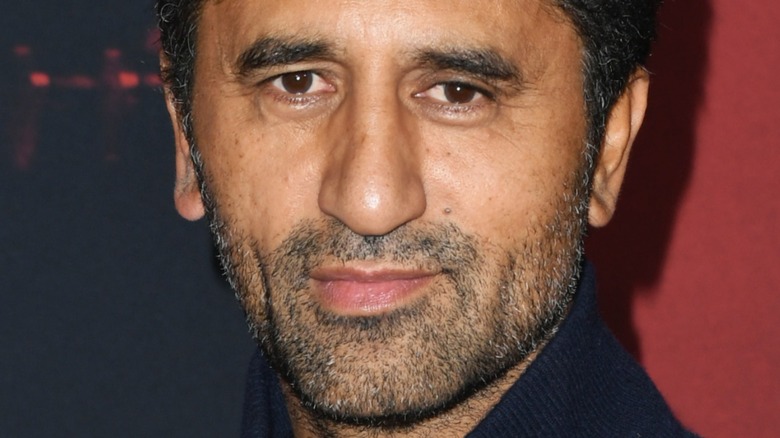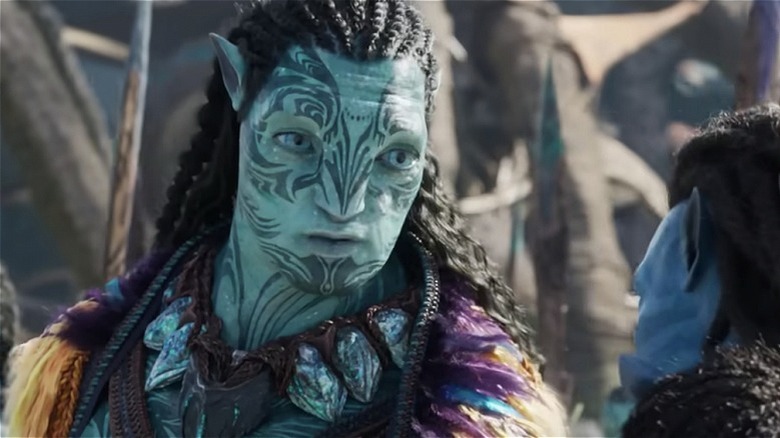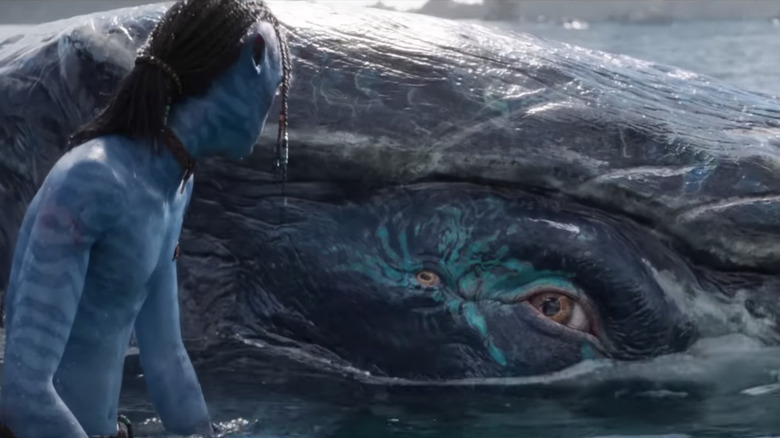Avatar: The Way Of Water's Cliff Curtis Recalls A Spiritual Stingray Diving Experience He Had While Filming
If there is one thing that viewers can expect going into a James Cameron movie, it is emotional resonance and spectacle. From his early work in "The Terminator" to box office hit, "Titanic," romantic relationships are always paired with impressive visual feats. 2008's "Avatar" seemed to take this as a challenge. Not only is the forbidden romance between Jake (Sam Worthington) and Neytiri (Zoe Saldaña) at the forefront of the conflict, but Cameron's technology in the film was only improved upon in the sequel, "Avatar: The Way of Water" (via SyFy). Emotional characters' storylines were not skimped on either.
Though Jake and Neytiri have been together for a decade, there are new characters who have just as much depth as their predecessors. The water-adjacent culture of the Metkayina has significant relationships with the tulkun — whales that dwell in their waters. Actors trained for months to be able to hold their breath underwater to make these types of sequences even more realistic. And for some, the way of water brought about connections that were not in the "Avatar" script pages.
Cliff Curtis didn't have a problem identifying with his character
In "Avatar: The Way of Water," James Cameron expands on the fascinating lore from the first film. On Pandora, the indigenous tribes are not just the forest-based people Neytiri calls family. Communities also exist in other environments, such as the Metkayina. Cliff Curtis joins the cast as one of their tribal leaders, Tonowari. Curtis went all in on the motion capture technology, which the actor reported being blown away by.
"I was stunned beyond belief — by how beautiful and emotional it is, and the genius of the sensations it gives you," Curtis told The Hollywood Reporter as the film was entering its final stages. Cameron could pull off this impressive feat by using the technological advancement known as "the volume" and by throwing his actors underwater. Both Curtis and Sam Worthington spoke to Supanova about the experience, detailing that while underwater, the "Doctor Sleep" actor had been surrounded by stingrays. This not only connected Curtis to his character but was a strange personal experience.
"I actually have a traditional tattoo of a manta ray. New Zealand, or Aotearoa, as we call it, the North Island, is actually considered to be a manta ray," Curtis explained. He described that his deep connection to underwater life was not unlike his character. He said, "I was like having this completely surreal experience."
Tonowari was inspired by real-life mythology
The world of "Avatar" may not be a reality, but that isn't to say that the sci-fi franchise doesn't have real-world implications. Even if viewers only have a cursory understanding of the first film, it's clear that the conflict on Pandora represents our climate anxieties. Issues like colonialism and depleting planetary resources underline every scene. The same goes for "Avatar: The Way of Water," in which Cliff Curtis found even more meaning.
"We're submerging with the creatures of the ocean," Curtis explained to Newshub about his character. Tonowari and his people find balance with marine life, specifically the tulkuns, with whom the characters have profound bonds. "We have stories about that, about our relationship with dolphins and whales. We have stories about giant eagles we used to fly on back. In Aotearoa, back home, these stories exist, but they exist almost like a mythology, and so Tonowari is a manifestation of this." Curtis likes to imagine that his ancestors had the same experience with their surroundings. One of the most moving dynamics of the film is Jake's son Lo'ak (Britain Dalton) bonding with his tulkun. Lo'ak feels like an outcast, even among his people. Resulting in a union between Neytiri and Jake, Lo'ak has human characteristics such as five fingers instead of four. But his relationship with the tulkun is a step towards acceptance.


